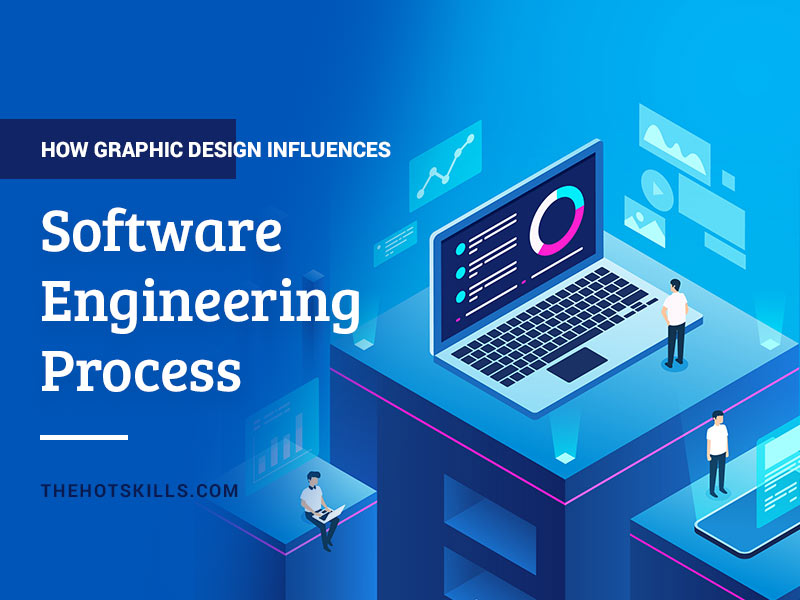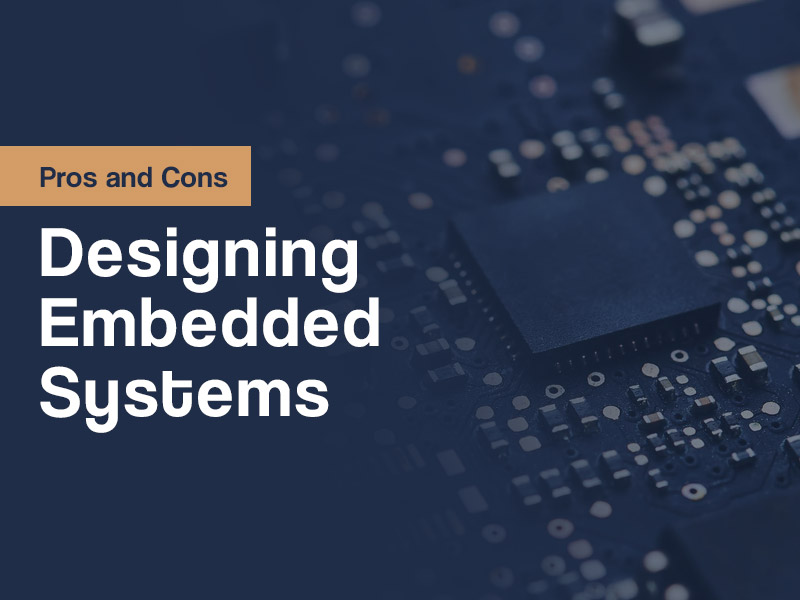Graphic design has long been an important aspect of a business. People are visual creatures. That’s why businesses make it a point that their marketing techniques convey a message visually. And this has always been well received by their target audience.
However, the emergence of digital technology introduced a completely new aspect to this interaction. At some point, the importance of design elements exceeds beyond how a product is viewed.
This article will explain ways that visual design impacts software engineering. It also tackles important graphic design concepts that web developers should learn. Before heading into detail, you should know what the software development process entails.
The Software Development Process
Software development is a set of processes with a well-defined structure. This is enforced for the production of software that can become popular in the market. During a software development project, a number of procedures take place. It includes:
Needs Identification
This part is where brainstorming and market research takes place. Developers need to determine what features and services the software should have. Similarly, they also need to discuss the product’s strengths and weaknesses.
Requirement Analysis
In this stage, stakeholders must agree on technical and user requirements. It is also where programmers decide on which software development strategy should be used.
Design
Architects and developers write complex technical specifications in this section. This way, they can produce software that meets the criteria. Moreover, this step serves as a template for developers and testers. It, then, lowers the likelihood of errors and delays in the final product.
Development and Implementation
Developers write codes based on the product’s needs that were agreed upon earlier in the process. Front-end developers design interfaces and back-ends. Meanwhile, database administrators enter important data into the database. The programmers also put each other’s code to test and review it.
Testing
Before deploying the software, the testing step inspects it for errors and ensures its functionality. Expert testers check the product’s functionalities. This is to ensure that it meets the criteria outlined in the requirements analysis document.
This process takes a lot of time since it should solve any errors and problems in the software. That’s why manual testers are expected to learn automation testing to streamline the process. Automation testing software helps testers achieve an accurate report on the tested software. This way, they can eliminate them faster before deployment.
Deployment and Maintenance
At this stage, developers can now release the software in the market. This is not to say that the software is now error- and bug-free.
Once it is released, there will be a maintenance team to handle any bugs that can occur. If the problem is small, it can be solved by simple maintenance. However, if there are major software problems, it needs to be upgraded.
All of these processes are centered around the software’s functionality and usability. Where does graphic design take part in all of these?
Most people think that usability is more important than design. However, aesthetics had been proven to be an important part of the development as well.
How?
A good visual design creates a good first impression and demonstrates that the designer cares. This improves the product’s overall user experience. And when people receive a positive user experience on the product, it generates customer loyalty. This means that they will more likely buy products from a company in the future.
Influences of Graphic Design on Software Engineering Process
When it comes to software development, user experience is a significant factor. As it turns out, graphic design heavily influences user experience. That’s why IT services that are focused on user experience put emphasis on their product’s visual design.
To understand better, take a look at the list below. You’ll find out how visual design impacts software engineering in the most significant ways.
1. Typography Impacts the Nature of the Product
Even without complex design aspects, the choice of lettering can affect the product and conversion rates. It’s also true even if UIs are reduced to their most basic form.
The human eyes read texts in a pattern known as a “scan path”. This means people divide words into 7 to 9 chunks before pausing to digest what they’ve read. Software systems should use this to make text blocks more useful and intuitive. In addition, some forms of typography can help create the tone for a product.
For example, Helvetica has a more official feel to it that’s why it is used for tax forms. Courier typefaces, on the other hand, are like typewritten memoranda. They’re better suited to more informal forms.
Finally, sans serif fonts are straightforward and pleasing to the eye. Not to mention they are legible on screens of various sizes. For this reason, they are used for commercial distributions.
All of these are at the heart of graphic design. They have a big impact on the final software’s quality and usefulness.
2. Inclination to Full-Stack Development
Software engineering is split into two groups: back-end and front-end developers. The back-end developers handle the server-side of the programs. On the other hand, the front-end developers handle the user interface. Both groups have their own programming languages and design methodologies.
While this distinction remains, the whole programming industry is leaning more into full-stack terrain.
HTML, for example, was originally developed for visual representation. However, it now has a plethora of programmable functions.
The traditional backend giants, such as Java, are still constantly developing their visual design. Newer technologies like Python are designed specifically for full-stack programming.
Graphic design gradually ceases to be an afterthought in software engineering or development. It is becoming its cornerstone as this growth continues.
Companies have more control over the final product
The manufacturing of the same product is sometimes separated between different teams. Because of that, there is always the risk of miscommunication between two teams. For this reason, graphic design has been integrated into the development process. Companies, then, are able to have greater control over the appearance and feel of the final product.
Companies can save time and money
Leaving graphics solutions beyond business owners’ control slows down the development process. To solve such problems, design is put at the center of the programming process. By doing so, the development process becomes more streamlined and cost-effective.
4. Graphic Design Allows for New Programming Methods
The job market for software developers is extensive. This means that aspiring engineers will have plenty of opportunities for personal and professional development.
Nonetheless, rooting from “good programming practices” extended work with a limited set of technologies. This has a tendency to take the imagination out of software engineering.
The integration of graphic design into the development process helps developers a lot. It allows them to venture outside of their comfort zones. Additionally, they can now experiment with new visually-driven techniques.
With this, new techniques and procedures can be converted to a backend setting. Connections between visual elements can be used in environments where such connections are difficult to visualize.
5. Provides a Deeper Understanding of Users
Software packages are designed for end-users who will use them regularly. Theoretical assumptions about how they use the product provide the basis for a successful case study.
Software products have grown independent from graphic environments. That’s why examining various design aspects is one of the first tasks in completing case studies. As a result, visual design has always been a part of the software engineering process.
What does this signify for modern software developers and engineers like yourself?
Software engineers should take measures to gain a deeper grasp of visual design. And they should also understand more the techniques that end-users find appealing. This way, they can better approach development from the user’s perspective.
The final products, then, should be more polished and user-friendly.
6. Communicating the Message of Credibility
The issue of visual display is becoming increasingly crucial as time passes. People’s first impressions of a product are mostly based on the visual experience they are given.
If the layout is unattractive, 38% of visitors would abandon a website. Similarly, 75% of people generate opinions about a company’s legitimacy based on the website’s design.
These figures provide valuable insight into the condition of the software market. In fact, software firms should incorporate visual design more firmly into their day-to-day operations. This is to establish a professional image and differentiate themselves from the competition.
7. Improves Immersion
One of the most valuable benefits of good graphic design is how it establishes continuous immersion.
Gestures are making their way in today’s smartphone operating systems and software industries. This is in comparison to the traditional extensive explanations and obtrusive controls. The text blocks are seamlessly included in the images. This makes the pictures create a continuous visual composition with their natural environment.
The situation was different before. The visual design appears to be much more incoherent and heavily relied on text.
Technology is gradually heading toward a more immersive visually-driven experience. This provides evidence of how much graphic design is integrated into software engineering.
Does This Mean Developers Should Learn About Graphic Design?
Web development and web design are inextricably linked. A web developer is a person who is responsible for coding websites. In comparison. web designers focus on the entire appearance. This includes picture placement and content integration.
If you’re a web developer, you shouldn’t be concerned about what web designers do. Anything they generate aesthetically can be readily coded down. However, you can master a few essentials about visual design to improve your web development approach.
Here are some of the concepts that web developers should know about visual design.
1. The Website’s Outlook
Including everything in a website makes the overall appearance too overwhelming for users. In any case, the developer is sometimes required to include a large number of pop-ups and sections.
At this stage, understanding how to integrate design components to establish balance can pass the user engagement test. Even though a web page appears to be overcrowded, a few tweaks to the spacing and sizing can make a big impact.
A cluttered website can cause a visitor to get confused. Meanwhile, a well-balanced design makes the page intuitive on its own. This often results in repeat visitors.
2. Grids and Compositions
The layout of a webpage is primarily determined by how much space is available. Developers should understand how to use grids effectively. They are important in organizing options and selections in a visually pleasing manner.
The rule of thirds is something that all designers should know. The design area should be divided into three sections. The focus element should, then, take up a third of the visual space. That way, there will be enough white space, which is an important aspect of web design.
Aside from that, every designer should learn the golden mean principle to attract users. Instead of cramming all elements in one page, consider moderation when combining design aspects.
3. Attractive Contrasts
It’s critical to maintain balance. However, you should not forget about contrast.
Contrast does not mean that you should choose bright, complementary colors. It also includes the different facets of the size that you can work on. Enlarging a caption or a logo can have a lingering effect on the visitor’s memory.
The key is to plan out all of the stuff you’ll need from the start. Determine what is critical and what is not. It’s also a good idea to create a visual hierarchy to make things easier for visitors.
4. Compelling Typography
As a developer, you can get sidetracked by focusing on using the right codes. You need to keep in mind that fonts influence the overall feel of a website. As a result, they’re more significant than you realize.
Moreover, you should concentrate on using different font styles. A website has a heading, subheadings, alternatives, and texts. Using different font styles helps separate them from each other, which increases readability. You can do this by getting updated with modern font style trends used in web designing.
5. The Right Colors
Web design isn’t all about colors. However, color use is undoubtedly one of the most crucial parts of the design.
Colors represent people’s personalities, thoughts, and emotions. The appropriate hue can elicit the responses you’re looking for. Similarly, it allows you to express an appropriate sense of brand identity. The use of gradients and contrasts on different pages and areas of the website also adds to the UX. They create a sense of structure and calm.
To ensure that a decent color scheme is put to good use, you need a basic understanding of color theory. Learn how colors differ from one another and how they relate to one another. Once you understand it, you’ll see the importance of using the right color.
6. Building Up Brand Identity Through Design
A web developer has to understand how web design works to create a brand identity. Brand identity is not something that is created by the web developer or designer. It’s the website designer’s final vision, which is generally the client.
Because of this, it is important that you convey it correctly. If not, your design will be rejected or will not operate well with people.
The Bottomline
There are many fundamental interconnections between software engineering and graphic design. And, based on what is known so far, the distinction between these two gets hazier as time passes.
Shifting away from this form of input in favor of something less intrusive doesn’t change anything. There will still be a need for visual cues to run the applications. This only implies that graphic design will remain at the heart of software development.







